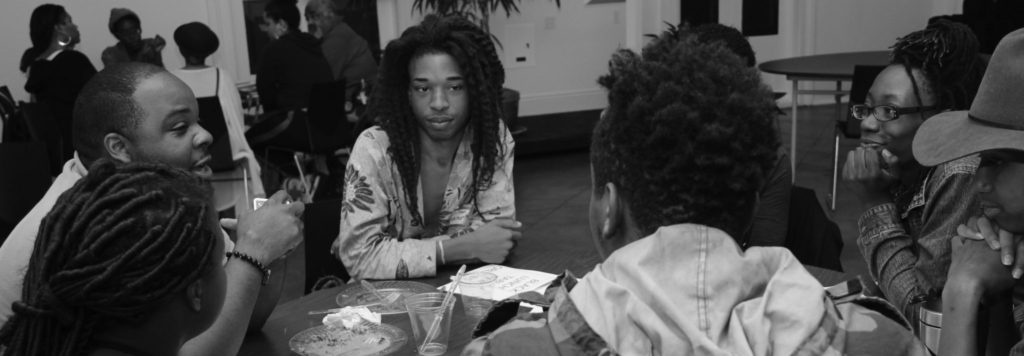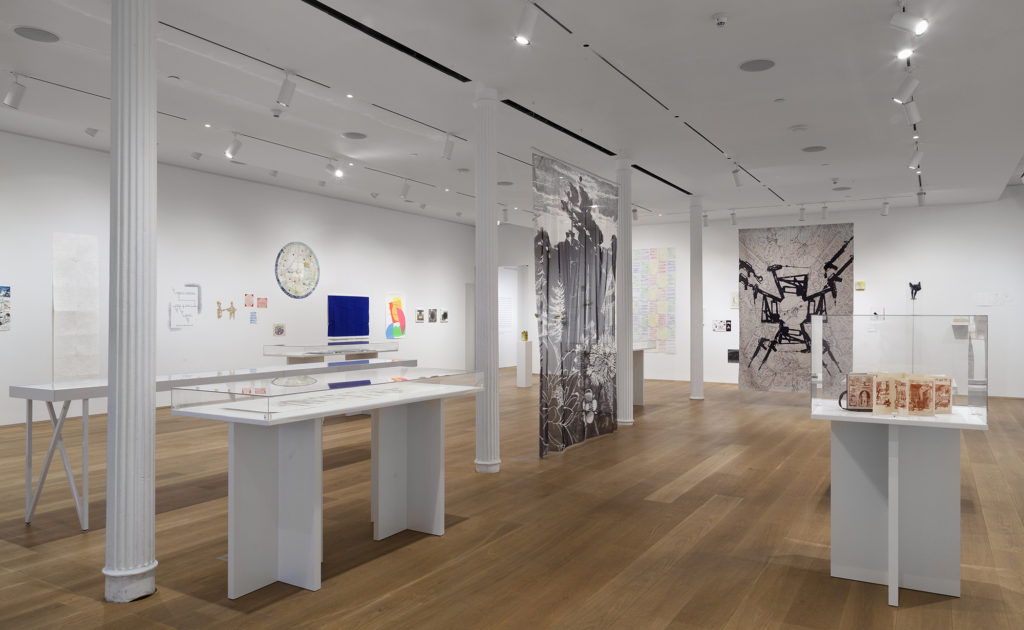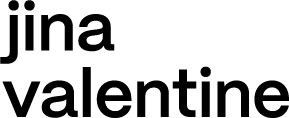COLLABORATIONS

BLACK LUNCH TABLE
2005 – Present
[co-founder w/Heather Hart] Roundtable discussion series, audio archive/database, Wikipedia edit-a-thon series.
Black Lunch Table began in 2005 at the Skowhegan School of Painting and Sculpture in Maine. Organized around literal and metaphorical lunch tables, BLT takes the school lunchroom phenomenon as its starting point. In previous iterations (2006-2011), BLT took the forms of online intercollegiate meet-ups, artist salons, and informal roundtable discussions. It presently comprises a series of artist roundtables, community roundtables, an online oral history archive, and Wikimedia project. The format for our roundtables is modeled after a project iteration we staged in 2014 in Chicago at Black Artists’ Retreat (BAR), an annual symposium for Black artists. Participants are curated into conversations, provided with a set of prompts, and discussions are audio-recorded and transcribed for eventual public access on our online archive. Our 2014 event provided a unique situation wherein generations of historically significant Black artists were actively involved in defining the agendas of our amorphous community. In January 2015, we staged our first People’s Table (then called #blacklivesmatter table). That event responded to recent police involved shootings of unarmed Black people, and state-violence both locally and nationally. The #blacklivesmatter session followed the format established at BAR 2014 in a two-part series of lunch table discussions engaging artists, activists, academics, students, politicians, and local community members from across the Research Triangle in North Carolina.
As we researched models for the BLT archive to house the recorded audio, we noted that many significant Black artists were omitted from art historical archives and the world’s most widely referenced encyclopedia, Wikipedia. Our Wikipedia project redresses these omissions by mobilizing a collective authoring of articles on the lives and works of Black artists. When we began our Wikipedia project in 2014, important figures such as Fred Moten, Meschac Gaba, Peggy Cooper Cafritz, and Valerie Cassel Oliver were all without pages. Five years later, each person has a page that began as a BLT target. Black Lunch Table is also recognized as an official Wikimedia Project, in its third year of project funding, which is supported by the Foundation’s Wikimedia Annual Plan Grant. Under COVID lockdown we have hosted dozens of online events including, Wikipedia edit a thons, workshops, artist features, and skill shares. We have also collaborated with other institutions to bring our Wikipedia project to their communities.
BLT has grown significantly in the past five years, thanks to the support of grants from the Mellon Foundation, the Warhol Foundation, the Ford Foundation, Creative Capital, the Wikimedia Foundation, the Foundation for Contemporary Art, and the Institute for Arts and Humanities at UNC. We have been invited to host events at dozens of institutions around the country, and in Canada, Nigeria, Trinidad & Tobago, Jamaica and South Africa. BLT has matured from an independent collaboration between two artists into a nonprofit with administrative staff, production staff, and affiliate proxies in other cities. Receiving press documentation (including Artsy.net, Art21) and authoring book chapters (including Wikipedia@20) has provided opportunities to publicize the project, connect with new publics, and inspire our critical reflection on the project’s history and its future.
ALL RISE
2017, 2018
[Collaboration with Heather Hart, Hong-An Truong, Huong Ngo]
Performance + roundtable discussions at UNC Chapel Hill, MCA Chicago, Station of Contemporary Art, Houston.
Our performance series addresses issues of immigration and institutional racism in our communities and ultimately aims to create a space for public art and critical dialogue on campus. All Rise combines strategies from two ongoing collaborative projects, And And And Stammering: An Interview and The Black Lunch Table.
All Rise was a community-based performance series that addressed issues of police brutality, immigration, and institutional racism in our communities and ultimately aimed to create a space for speech, performance, and critical dialogue. All Rise combined strategies from two ongoing collaborations Black Lunch Table and And And And Stammering: An Interview.
Trương and Ngô’s work And And And Stammering: An Interview stages an interrogation as a performance of citizenship. It engages a participant from the audience to rehearse the process of becoming a U.S. citizen through a live interview, and allows audience members to imagine themselves in positions of precarious citizenship. For All Rise, Black Lunch Table curated post-performance roundtables following stagings of And…, as well as two community roundtables.

THE INSTITUTIONISTS
(DRAWING CENTER) EXHIBITION + CATALOGUE
2014
Center’s Main Gallery (w/Steffani Jemison & Heather Hart), works selected from 65 Viewing Program artists + programming.
The Intuitionists is an artist project and a collection of text art, objects, and ephemera solicited from artists who participate in The Drawing Center’s Viewing Program. Conceived and organized by artists Heather Hart, Steffani Jemison, and Jina Valentine, The Intuitionists took the concept of aggregate—to bring together individual streams that remain independent and theoretically divisible—as its point of departure. Relying upon a non-hierarchical, keyword-based system to identify artists and organize artworks in the galleries, The Intuitionists imagined individual artworks as independent agents. The connection between mark, symbol, text, and collection is elaborated in a catalog.
Colson Whitehead’s The Intuitionists—a novel that addresses notions of becoming and imminence—enabled the organizers to identify participating artists and solicit contributions. The text was divided into a series of words and phrases. Each word or phrase inspired a unique group of keywords used to conduct a query of the Viewing Program database. The artist specified by each query was asked to submit a work or object in response to the phrase. In this way, the exhibition included one artwork each by 65 artists, the number of participating artists corresponding to the number of words or phrases.
Informed by such diverse theorists as Susan Stewart, Rammellzee, Michel Foucault, Henri Bergson, and Paul Virilio, The Intuitionists considered how the collection, the database, the aggregate, and the narrative serve as complementary models for the organization of information and objects in flux. How do marks, symbols, words, texts, and artworks resist assimilation into an undifferentiated flow of data? The project is committed to the investigation of constructed languages, ciphers, language poetry, and alternative alphabets, all of which permit text (and its constituent parts—marks, letters, etc.) to be used and interpreted against convention.

